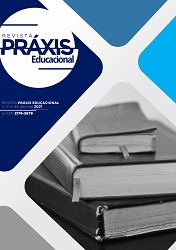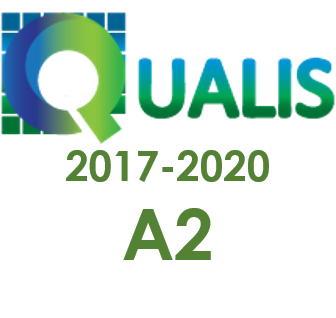THE FORMATION OF COLLECTIVE SUBJECTS’ SMALL SOCIAL GROUPS IN THE INFORMATION AGE (PROBLEM OF IDENTITY)social groups in the information age (problem of identity)
DOI:
https://doi.org/10.22481/praxisedu.v17i44.6839Keywords:
artificial intelligence, collective subject, situational communitiesAbstract
The article takes a new look at the impact of artificial intelligence (AI) technology on society, which leads to the formation of fundamentally new social groups. The greatest diversity and freedom of development will be allocated to small social groups that directly interact with AI. The model of the new social group should answer the following questions: what opportunities does AI offer? What role can AI play in a small social group? How will people identify with a similar group? The description of the structure of small social groups was used, the multisubject role of the organizer and intermediary of
the AI was determined. The concept of «situational community» was used to reveal the equilibrium structure of such groups, where either individual or group identity dominates. In some situations, the AI will be able to replace the person who has left the group as a leader, or to ensure strict observance of the settings that are unchanged for the group, or to play the role of an implicit collective organizer, which, in order to preserve the integrity of the group, transforms its goals and objectives. Small social groups, thanks to AI, will gain access to professional skills and tools for organizing labor that previously had larger social structures. An increase in subjectivity can lead to significant transformations and a change in the role of these social groups. A threat has been identified: the individual may not be able to independently abandon his behavioral-cognitive and emotional identification with the group.
Downloads
Metrics
References
2. Demir, M., Cooke, N., & Amazeen, P., 2018. A conceptual model of team dynamical behaviors and performance in human-autonomy teaming. Cognitive Systems Research, 52, 497-507. https://doi.org/10.1016/j.cogsys.2018.07.029
3. Artificial Intelligence for the Internet of Everything. Academic Press, 2019. 303 p. https://doi.org/10.1016/C2018-0-00012-2
4. Artificial Intelligence in Society, 2019. OECD Publishing, Paris, 2019. 139 p. https://doi.org/10.1787/eedfee77-en
5. Marcus, G., 2014. What Comes After the Turing Test? New Yorker. Conde Nast, 9 June. Available at: < https://www.newyorker.com/tech/annals-of-technology/what-comes-after-the-turing-test >. Access: May 30. 2020.
6. Brooks, R., 2018. Steps Toward Super Intelligence IV, Thingsto Workon Now. RODNEY BROOKS Robots, AI, andotherstuff. RodneyBrooks., 15 July. Available at: < https://rodneybrooks.com/forai-steps-toward-super-intelligence-iv-things-to-work-on-now/ >. Access: May 30. 2020.
7. Mavridis, N., 2015. A review of verbal and non-verbal human–robot interactive communication. Robotics and Autonomous Systems. Volume 63, Part 1. Pages 22-35 https://doi.org/10.1016/j.robot.2014.09.031
8. Hawking, S., 2019. Kratkie otvety na bol'shie voprosy [Brief Answers to the Big Questions]. Eksmo, Moscow. 256 p. (in Russian).
9. Nancy, J.L., 2004. Byitie edinichnoe mnozhestvennoe [Being Singular Plural]. Logvinov, Minsk. 272 p. (in Russian).
10. Nancy, J.L., 2009. Neproizvodimoe soobschestvo [Unproductive community]. Vodoley, Moscow. 208 p. (in Russian).
11. Kerimov, T.H., 2007. Nerazreshimosti [Insolubility]. Akademicheskiy Proekt; Triksta, Moscow. 218 p. (in Russian).
12. Sohova, Z.B., Redko, V.G., 2019. Modelirovanie poiska investitsionnyih resheniy avtonomnyimi agentami v prozrachnoy konkurentnoy ekonomike [Modeling the search for investment solutions by autonomous agents in a transparent competitive economy]. Iskusstvennyiy intellekt i prinyatie resheniy 2. p.98-108. https://doi.org/10.14357/20718594190210 (in Russian).
13. Bashlyar, G., 1987. Novyiy ratsionalizm [New rationalism]. Progress, Moscow. 376 p. (in Russian).
14. Van Dik, R., 2006. Predannost' i identifikacija v organizacii [Devotion and identification of the organization]. Gumanitarnyj centr, Kharkov. 142 p. (in Russian).
15. Bazarov, T.Yu., Kuzmina, M.Yu., 2005. Protsessyi sotsialnoy identichnosti v organizatsiyah [The processes of social identity in organizations]. Rossijskij psihologicheskij zhurnal 1. Pages 30-45. (in Russian)
16. Lerer, A., Peysakhovich, A., 2018. Maintaining cooperation in complex social dilemmas using deep reinforcement learning. Available at: < https://www.researchgate.net/publication/318206182_Maintaining_cooperation_in_complex_social_dilemmas_using_deep_reinforcement_learning >. Access: May 30. 2020.
17. Styopin, V.S., Kuznetsova, L.F., 1994. Nauchnaya kartina mira v kulture tehnogennoy tsivilizatsii [The scientific picture of the world in the culture of technogenic civilization]. IFRAN, Moscow. 274 p. (in Russian).
Downloads
Published
How to Cite
Issue
Section
License
Copyright (c) 2021 Práxis Educacional

This work is licensed under a Creative Commons Attribution-ShareAlike 4.0 International License.
You are free to:
Share - copy and redistribute the material in any medium or format; Adapt - remix, transform, and build from the material for any purpose, even commercially. This license is acceptable for Free Cultural Works. The licensor cannot revoke these freedoms as long as you follow the terms of the license.
Under the following terms:
Attribution - You must appropriately give credit, provide a link to the license, and indicate if any changes have been made. You may do so in any reasonable way, but not in a way that suggests that you or your use is endorsed by the licensor.
There are no additional restrictions - You cannot apply legal terms or technological measures that legally restrict others to make any use permitted by the license.










